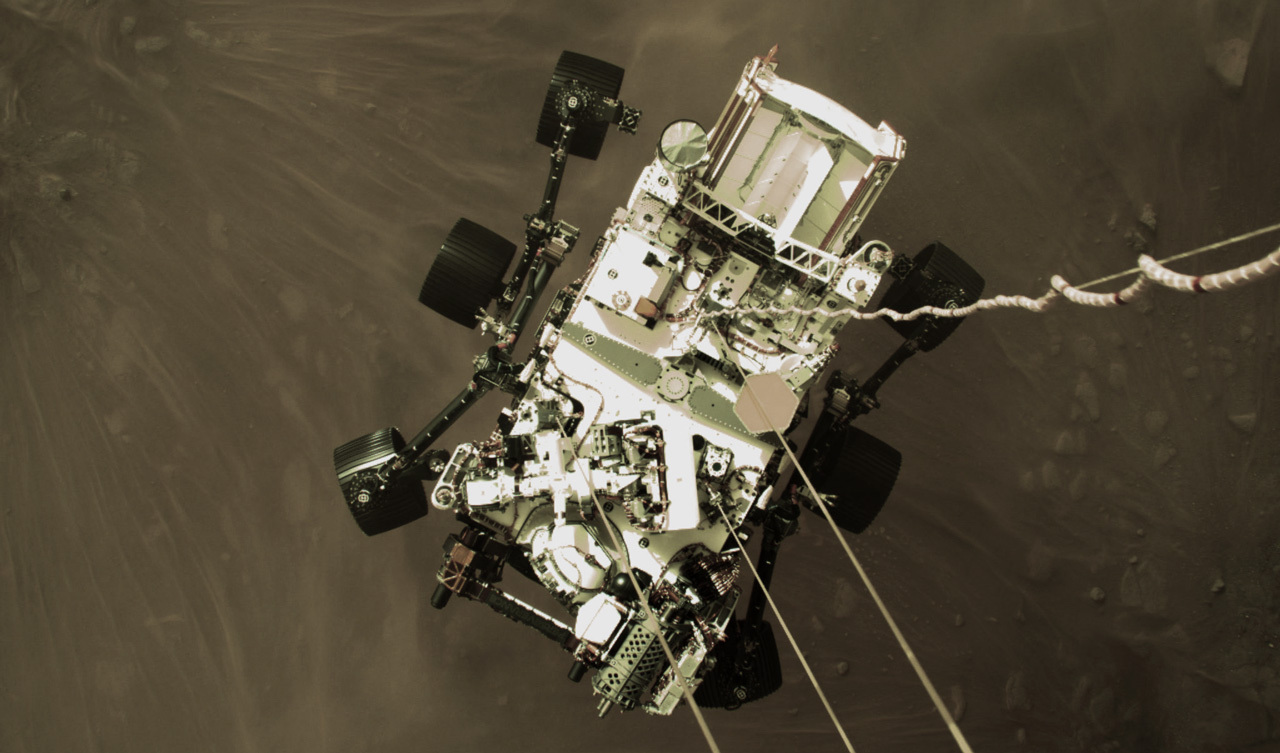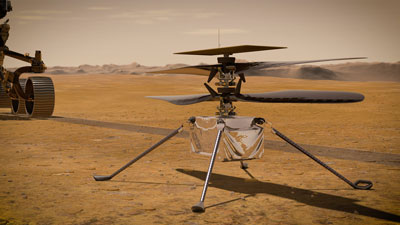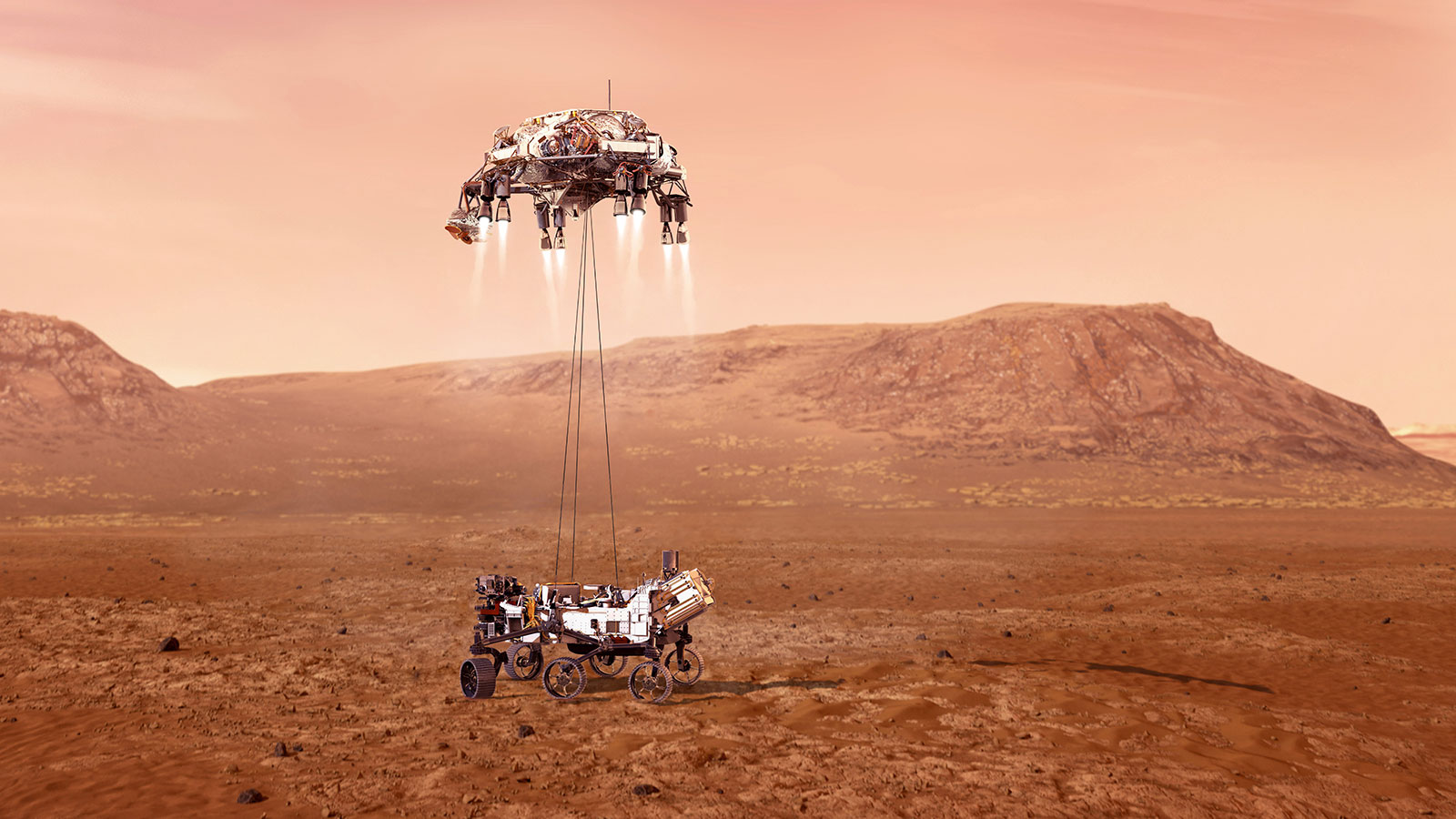Will Wonders Never Cease? NASA's Perseverance!
"In the days to come, engineers will pore over the rover’s system data, updating its software and beginning to test its various instruments. In the following weeks, Perseverance will test its robotic arm and take its first, short drive. It will be at least one or two months until Perseverance will find a flat location to drop off Ingenuity, the mini-helicopter attached to the rover’s belly, and even longer before it finally hits the road, beginning its science mission and searching for its first sample of Martian rock and sediment.""A primary objective for Perseverance’s mission on Mars is astrobiology research, including the search for signs of ancient microbial life. The rover will characterize the planet’s geology and past climate and be the first mission to collect and cache Martian rock and regolith, paving the way for human exploration of the Red Planet.""Subsequent NASA missions, in cooperation with ESA (European Space Agency), will send spacecraft to Mars to collect these cached samples from the surface and return them to Earth for in-depth analysis.""The Mars 2020 Perseverance mission is part of NASA’s Moon to Mars exploration approach, which includes Artemis missions to the Moon that will help prepare for human exploration of the Red Planet."NASA Science
 |
This is a high-resolution still image, part of a video taken by several cameras as NASA’s Perseverance rover touched down on Mars. A camera aboard the descent stage captured this shot. Credit: NASA/JPL-Caltech. |
Perseverance is a laboratory, an advanced astrobiology lab, and it is now in another world destined to continue making cosmic history for humanity as it sets out to search for traces of microbial life, as it has been exquisitely programmed to do. When radio signals confirmed that the rover survived its gripping descent to arrive within the target zone inside Jezero Crater, NASA's Jet Propulsion Laboratory burst into applause with relief and jubilation.
It took the robotic vehicle close to seven months zooming through space as it covered 472 million kilometres to penetrate the Martian atmosphere, doing so at 19,000 km/hr as it approached touchdown. Touchdown accomplished, Perseverance beamed its initial images from the Martian surface. Radio waves take 11 minutes to travel between Mars and Earth; signals relayed to Earth from a satellite orbiting Mars informed the NASA lab of the success of the landing.
A complex series of manoeuvres had resulted in the self-guided descent and landing; representing the most elaborate, technologically challenging choreograph ever designed and succeeding in robotic space flight. "It really is the beginning of a new era", exulted NASA's associate administrator for science, Thomas Zurbuchen, of the event that represented the riskiest portion of the two-year, $2.7-billion investment with the aim to search for any potential fossilized signs of microbial life once having flourished three billion years ago on a warmer, wetter, hospitable-to-life Mars.
 |
| The Mars Helicopter, Ingenuity, is a technology demonstration to test powered flight on another world for the first time. |
The hope is that samples of ancient sediments extracted from Martian rocks for analysis on Earth at a future date will contain biosignatures embedded there, informing scientists of the presence -- or absence -- of evolutionary biology, however primitive, on the red planet. There will be two Mars missions to follow with a goal of retrieving the samples to return them to NASA, within a decade. Perseverance is packed with instruments to enable the craft to build on previous findings.
There is a device meant to convert carbon dioxide in the Martian atmosphere into oxygen via a box-shaped tool, the first of its kind to extract a natural resource for use by humans from an extraterrestrial environment -- a prospective assurance that future manned expeditions can be assured a source of oxygen, one that will also be used to produce rocket propellant for returning astronauts to Earth. A miniature helicopter, weighing 1.8-kilograms is designed as a test of the first powered, controlled flight on another planet.
To gain its position within the designated landing stage, the multistage spacecraft hoisting the rover soared to the top of the Martian atmosphere at close to 16 times the speed of sound on Earth, an aerodynamic lift that jet thrusters then adjusted in its trajectory followed by a supersonic parachute inflation to slow the descent. Deployment of a rocket-powered "sky crane" vehicle then flew to a landing spot to lower the rover on tethers. And the deed was done!
 |
| Mars Perseverance, Landed February 18, 2021 NASA Science |
Labels: 2021, Experiments, February 18, Landing, Mars Exploration, NASA

<< Home